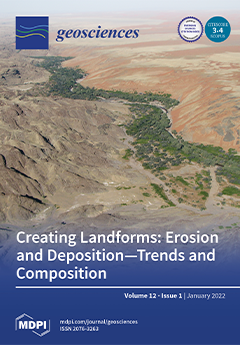Dihydrogen (H
2) is generated by fluid–rock interactions along mid-ocean ridges (MORs) and was not, until recently, considered as a resource. However, in the context of worldwide efforts to decarbonize the energy mix, clean hydrogen is now highly sought after, and the
[...] Read more.
Dihydrogen (H
2) is generated by fluid–rock interactions along mid-ocean ridges (MORs) and was not, until recently, considered as a resource. However, in the context of worldwide efforts to decarbonize the energy mix, clean hydrogen is now highly sought after, and the production of natural H
2 is considered to be a powerful alternative to electrolysis. The Afar Rift System has many geological features in common with MORs and offers potential in terms of natural H
2 resources. Here, we present data acquired during initial exploration in this region. H
2 contents in soil and within fumaroles were measured along a 200 km section across the Asal–Ghoubbet rift and the various intervening grabens, extending from Obock to Lake Abhe. These newly acquired data have been synthesized with existing data, including those from the geothermal prospect area of the Asal–Ghoubbet rift zone. Our results demonstrate that basalt alteration with oxidation of iron-rich facies and simultaneous reduction in water is the likely the source of the hydrogen, although H
2S reduction cannot be ruled out. However, H
2 volumes at the surface within fumaroles were found to be low, reaching only a few percent. These values are considerably lower than those found in MORs. This discrepancy may be attributed to bias introduced by surface sampling; for example, microorganisms may be preferentially consuming H
2 near the surface in this environment. However, the low H
2 generation rates found in the study area could also be due to a lack of reactants, such as fayalite (i.e., owing to the presence of low-olivine basalts with predominantly magnesian olivines), or to the limited volume and slow circulation of water. In future, access to additional subsurface data acquired through the ongoing geothermal drilling campaign will bring new insight to help answer these questions.
Full article





